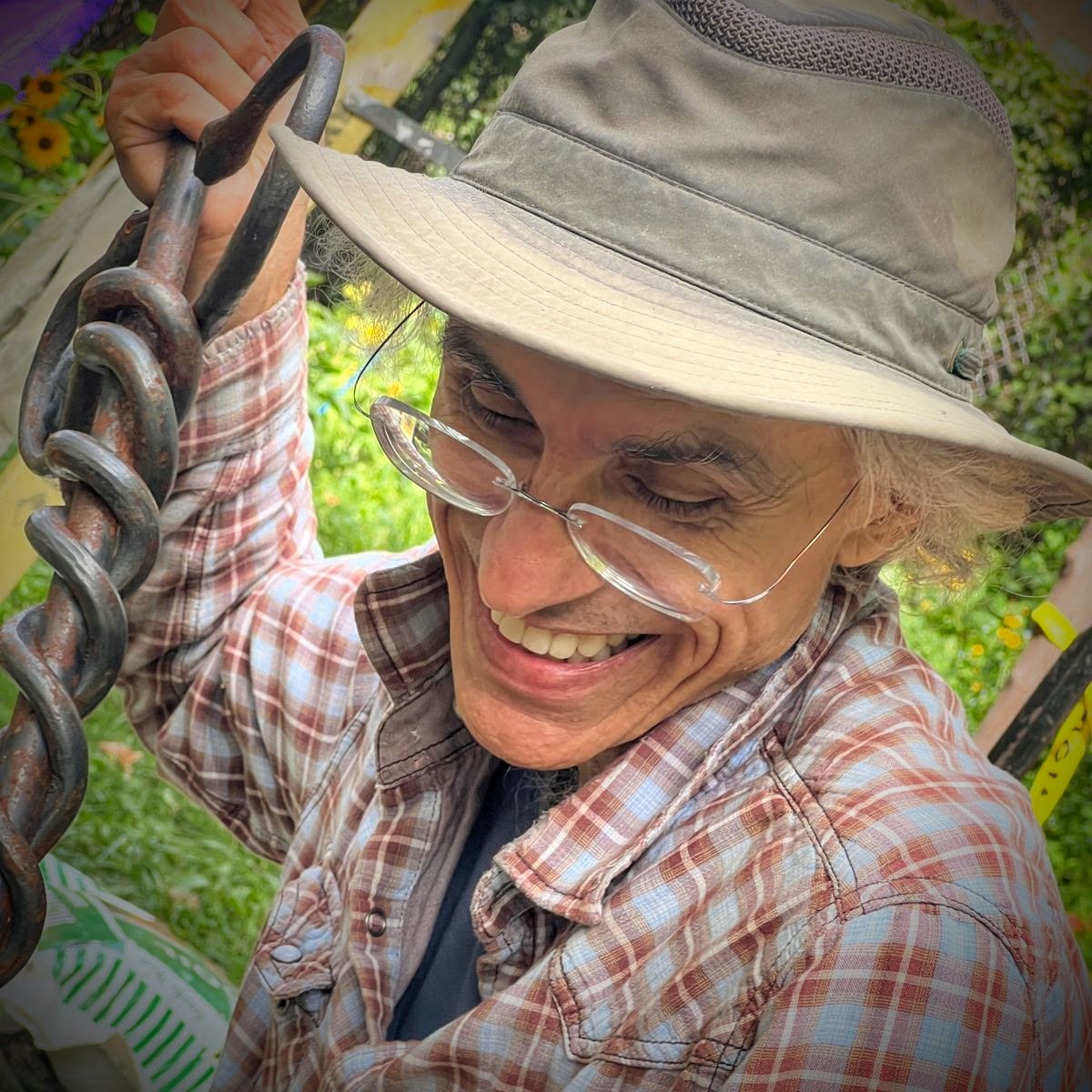AreshEarth in the Media
Media attention has been vital in spreading the message of neighborhood activism, protecting the Earth, and preserving people-powered community centers. Here are some links and snippets from over the years.
Drawing of activists defending Jardín de la Esperanza in World War 3 Illustrated, February 2000.
Aresh Javadi protesting out of love for community gardens from the top of a tree. La Prensa, March 2000.
Aresh Javadi working with More Gardens, creating puppetry to support community garden preservation. January 1991.
________________________________________________________________
Online Articles
To see more articles, as well as books and documentaries involving AreshEarth, visit this link.
________________________________________________________________
Aresh Javadi's Body of Environmental Artwork is Selected at the 6th Iran International Green Film & Art Festival
Aresh Javadi's body of environmental artwork of NYC community gardens is selected at the 6th Iran International Green Film & Art Festival 💫 (IIGFF6), slated for September 9-15, 2017 in Tehran and other Iranian cities.
The festival has the objectives of recognizing, screening and awarding the best national and international films and visual arts aimed at protecting the environment, natural resources, increasing public awareness and promoting the culture of environmental preservation. The event is considered as the foremost cultural event focusing on protecting the environment in the Middle East.
The festival of film and arts will travel throughout Iran as well as Economic Cooperation Organization countries with the aim of reaching 1 million viewers. It will also provide workshops, press conferences, Clean Air Day, participating in the national award ceremony of green industries and services, and one of my favorites: organizing tree-planting events. More information about the festival, visit http://www.IIGFF6.org.
The art of preserving paradise in NYC
The Beginning of Aresh’s Earth-Based Art:
The community gardens grew after the decline in the 1970s when landlords burned down many buildings for quick insurance money and left working class neighborhoods a war-torn landscape of thousands of rubble and trash filled vacant lots. In the next 20 years, united neighborhood residents, with sweat and love, created a paradise of over 700 community gardens. The gardens brought food, medicine, celebration, peace, beauty and much more to neighborhoods lacking in open spaces. As the communities became stable the new mayor in the 1990’s chose to go against the people and sell all the gardens even when over 14,000 empty lots existed. Thanks to this challenge our story begins.
In 1998, Aresh Javadi co-founded More Gardens, a group of community gardeners and activists who joined forces to use arts, education, and activism to preserve all community gardens and to make more. He led the artistic front of the movement by creating giant puppets in the shapes of animals and plants that spoke truth to power in a most colorful and direct way on the streets of NYC. The artworks were instrumental in bringing public attention to this cause and forced the administration to permanently preserve 114 community gardens by selling them to private land trusts.
Hundred more gardens still remained threatened.
The Esperanza Coqui and Sunflower Sculptures for Garden Defense, August 1999:
In a popular myth in Puerto Rico, a monster came stomping to a forest destroying all the trees and habitats. All animals, small and large, failed to stop him. The tiny coquí frog then stepped forward, chirping its famous shrill cry that sounds like it comes from an animal many times larger and scaring the monster away.
Aresh and the Puerto Rican gardeners of the endangered Esperanza community garden agreed to call in for the Coqui to magnify our voices.
After three months of community labor of love, the twelve foot long Coqui perched proudly on a platform keeping a watchful eye over the eight-foot fence. She also called out loudly for the preservation of the remaining 500 endangered community gardens in NYC.
Aresh also designed a 27-foot high tower in the shape of a sunflower with the chair at the heart of the petals for someone to sit atop, adding to the creatively complex museum of resistance. This Sunflower was later enhanced in the campaign that preserved dozens of community gardens in the Melrose neighborhood of the South Bronx.
People began sleeping two at a time inside the coquí in order to be on the lookout for bulldozer trying to destroy the garden around the clock, while dozens of others joined them every morning at dawn with coffee and breakfast. Through the cold months of winter at the turn of the millennium, El Jardin de la Esperanza became an epicenter of activism, celebration, community-building, and gathering for the Lower East Side and all of New York City.
The battle and eventual destruction of Esperanza became a symbol of struggle and resistance for the whole city. The outpouring of support for the Esperanza community garden helped place a temporary restraining order and the eventual preservation of the majority of over 500 community gardens, showing new possibilities of hope when the people of the city unite and reclaim their rights.
Giant Bike Caterpillar Street Art:
Aresh designed a 10 bike caterpillar that cycled through the streets of the city to raise awareness of the community gardens, as part of many constructed puppet processions. Outdoor performances like the puppet processions are responsive to the community in a very particular way which has to do with the experience of performing in the streets, as well as community participation in the construction and implementation of the artworks for the community’s cause: protecting their public parks and community gardens.









